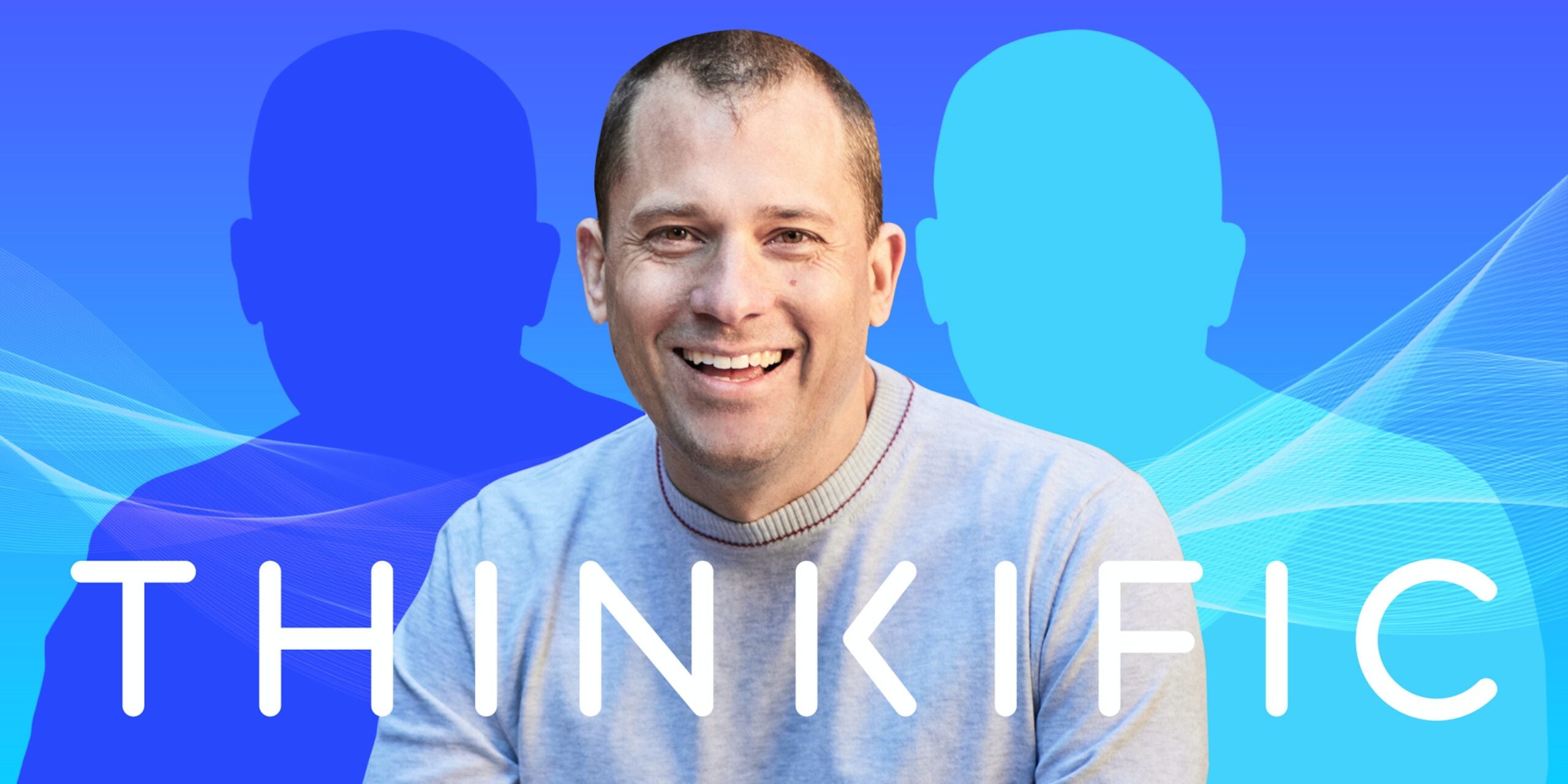
On Jan. 9, 2023, course creator platform Thinkific released its 2023 Digital Learning Trends Report. The report studied more than 2,000 Americans and interviewed over ten creator-educators in-depth to understand current trends in digital learning, side hustles, and the creator economy.
Thinkific offers a flexible, scaling pricing model. Users can sign up for a limited version of Thinkific for free. Its paid versions cost $36, $74, or $149 per month. Paid features include unlimited course creation, custom domains, live lessons, affiliate selling, and 24/7 live customer support.
In an interview with Passionfruit, Thinkific cofounder and CEO Greg Smith, alongside multiple creators familiar with the platform, shared insights on Thinkific’s latest report and detailed what creators need to know about its findings.
Creating courses to hedge against inflation
Thinkific experienced 2022 layoffs and struggles amid a downturned economy—similar to other online learning platforms for creators like Skillshare, Masterclass, and Coursera. Still, Thinkific’s 2023 report touts key areas of growth in digital learning for creators.
As marketers look to cut budgets amid a looming recession, creators are pivoting to find other ways to make money besides brand deals. Thinkific’s 2023 Digital Learning Trends report found 71% of people are considering pursuing additional income streams because of the current economy.
Smith said online courses can serve as an excellent way to diversify streams of income to provide security in uncertain times.
“Education has some counter-cyclical impact in that when the economy is down. It has some drivers that move it up because you have people who are either moving out of a job or looking to level up in a job. They’re looking to get a promotion, raise, or opportunity, or they have more time on their hands, so they’re looking for education to level up.”
Creators as educators and community leaders—not just entertainers
Thinkific’s research also concluded as creators pivot toward impact and education as opposed to just entertainment, the tide is shifting from creator-entertainers to creator-educators. In fact, the report found more than twice as many people are interested in creators making digital content for education than entertainment—whether it’s how to manifest their biggest dreams, how to invest money, how to knit, and everything in between.
Thinkific’s report also found 53% of people say they’re more likely to buy a product if it’s recommended to them by a fellow member of a community they belong to. According to Smith, creators are finding the secret sauce for selling content is to foster more engaged followers.
“There was a time when people were looking to buy and consume content,” Smith said. “But now they’re looking for connection.”
Educator-creator and CEO Jill Koziol (@jillkoziol) founded the online empowerment community for mothers, Motherly, which engages women through online education, content, social community, and podcasts. As of Jan. 19, 2023, Motherly has over 4.3 million cumulative followers across Instagram, Facebook, Pinterest, and Twitter.
Koziol said offering education via online courses to her audience is an important part of building a tight-knit, educational community. In addition, she recommended creators serve their audiences via multiple distribution channels.
“Don’t be deterred if digital education isn’t right for some people. Some people want to read. Some people want to listen. There are lots of different ways to engage your audience, so be flexible with that as well,” Koziol said.
Breaking into the creator-educator sphere
One of the biggest hurdles people eager to learn face is time. People don’t want to have to drive somewhere, transport a computer, and sit down for hours. Instead, they want to reach into their pocket, pull out their phones, and learn in quick microdoses.
Thinkific found 57% of people said they are more likely to learn something online if they can do so with a mobile device instead of a computer. For creators looking to capitalize on the “golden era of e-learning,” Smith stresses the importance of snackable e-learning content consumed on the go.
“Microlearning makes it easier for creators to get started [creating educational content] because you can produce little bite-sized pieces,” he said. “Move fast. Get something out, and learn from it. One of the big hurdles for people getting started in this space is the, ‘why me?’ kind of mental game of imposter syndrome.”
Creator-educator Debbie Rosas (@debbierosas), who has over 10,000 followers across Instagram and LinkedIn, has been a pioneer in the fitness industry since 1976. Now, she brings her expertise to a new generation through mobile-friendly and digital courses she develops on the Thinkific platform.
“The advice I have for anyone wanting to shift from creator-entertainer to creator-educator is to remember everything we do online is to entertain people’s needs and desires, and in some way, provide the hope, tools, and education to address their challenges and pain points,” Rosas said. “What we provide must educate [a person’s] body, mind, emotional feelings, and unique spirit.”
Koziol’s advice for creator-educators, particularly in a health-related field like hers, is to set yourself apart from the crowd with certifications proving your credibility.
“Lean into the fact that being an educator, and being a creator, and being an expert are all different things that can co-exist together,” she said. “But I think it’s really important to be transparent and authentic around if you truly are an expert. If there are certifications around what you’ve done by recognized bodies, get certified in something you’re passionate about, and make sure you’re leading with that.”




